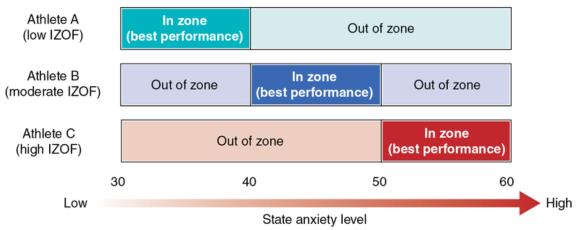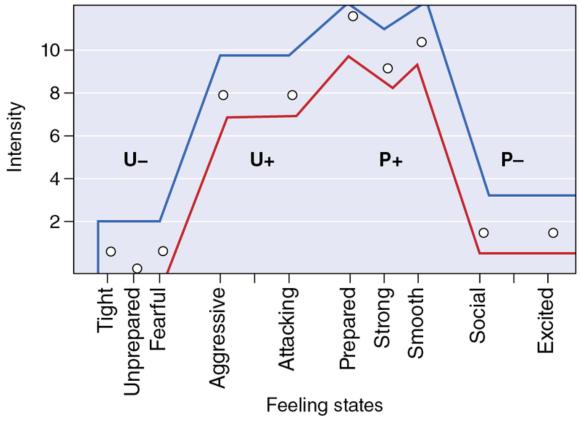Preparing Mentally and Emotionally
This is an excerpt from Coaching Better Every Season by Wade Gilbert.
Precompetition physical preparation will be wasted unless the coach also helps the athlete design effective precompetition mental and emotional preparation strategies. Athletes are known for finding creative ways to lower their stress before a competition. Some examples include Olympic medalist and U.S. national champion figure skater Gracie Gold who juggles before stepping out onto the ice; Hall of Fame baseball player Wade Boggs who had to eat chicken before every game; three-time Ironman champion Chrissie Wellington who liked to watch uplifting movies the night before a race; World Cup soccer player Laurent Blanc who had to kiss the shaven head of his goalkeeper before every match during France's run to the world title in 1998; and 11-time NBA champion Bill Russell who said, "The last thing I did before I went out was throw up [before every game]. I can't remember it not happening. Just like taping your ankles."
What should be clear from these contrasting examples is that if left to their own devices, all athletes will find a strategy that seems to work best for them. Therefore, the role of the coach is not to create precompetition mental and emotional coping strategies for their athletes. Rather, the coach should help her or his athletes learn how to monitor their precompetition mental and emotional states and provide guidance for creating personalized and appropriate strategies. Coaches, therefore, need to have a basic understanding of how emotions influence performance and how to harness emotions in the moments leading up to an event.
The Zone
Decades of research on arousal, emotions, and athletic performance shows that every athlete has unique precompetition mental and emotional needs, commonly referred to as individual zones of optimal functioning, or IZOF. Russian sport psychologist Yuri Hanin first coined the term IZOF based on his research with Olympic athletes.
Hanin made three key discoveries about emotions and peak performance. First, optimal precompetition arousal is best thought of as a zone or range of readiness as opposed to a single point in the arousal-performance relationship. Athletes consistently perform better when they report that their emotions are in the zone compared to when their emotions are out of the zone.
Second, there is no one ideal level of precompetition mental and emotional arousal; every athlete has a different ideal state. Notice in figure 8.2 that athlete A is most ready to perform when she is calm and relaxed. In contrast, athlete B is most ready to perform when he is more emotionally activated.

Individualized zones of optimal functioning (IZOF).
Reprinted, by permission, from R.S. Weinberg and D. Gould, 2015, Foundations of sport and exercise psychology, 6th ed. (Champaign, IL: Human Kinetics), 87.
Third, both pleasant (i.e., joy) and unpleasant (i.e., anger) emotions can be either helpful or detrimental to performance depending on the unique perspective of each athlete. This finding is perhaps the most surprising and important for coaches. When studying athlete emotions and peak performance, emotions are divided into four categories.
- [U-] unpleasant emotions perceived by the athlete as disruptive to peak performance
- [U+] unpleasant emotions perceived by the athlete as helpful to peak performance
- [P+] pleasant emotions perceived by the athlete as helpful to peak performance
- [P-] pleasant emotions perceived by the athlete as disruptive to peak performance
Although each athlete believes that specific emotions, such as joy or anger, either help or hinder performance, a consistent emotion-performance profile is associated with peak performance. With this profile, commonly referred to as the iceberg profile, athletes report low levels of unpleasant and pleasant emotions as ineffective and high levels of unpleasant and pleasant emotions as useful to peak performance. The goal, then, for coaches is to help athletes identify which emotions are most associated with peak performance for them personally.
Coaching scientist and former college coach Robin Vealey has created a simple exercise that coaches can use with their athletes to help them identify their individual zones of optimal functioning. An example of an individual zone of optimal functioning for a golfer, prepared using this type of exercise, is provided in figure 8.3.

Golfer IZOF profile.
Reprinted, by permission, from R. Vealey, 2005, Coaching for the inner edge (Morgantown, WV: Fitness Information Technology), 390. Permission conveyed through the Copyright Clearance Center, Inc.
- Step 1: Ask athletes to write down three or four pleasant emotions (e.g., confident, energetic, certain) and three or four unpleasant emotions (e.g., tense, nervous, irritated) they believe help them perform at their best.
- Step 2: Ask athletes to write down three or four pleasant and unpleasant emotions they believe hurt their ability to perform at their best.
- Step 3: Ask athletes to rate, on a scale of 0 (not at all) to 10 (most possible), how much they need to feel that emotion during their precompetition routine. For example, athletes may identify confidence as a pleasant emotion that they believe helps them perform best, and they believe that their confidence needs to be at least an 8 in the moments before a competition.
- Step 4: Have athletes plot the scores for each emotion by placing a small circle or dot on a graph with intensity on the y-axis and feeling states on the x-axis. This point represents the athlete's preferred intensity for each type of emotion identified in steps 1 and 2.
- Step 5: Have athletes then draw their zone of optimal functioning by drawing a line 1 point above and 1 point below each circle on the graph. For example, using the example of wanting to feel an 8 on confidence, the athlete would draw the top line of the zone at 9 and the bottom line of the zone at 7 for confidence.
Learn more about Coaching Better Every Season.
More Excerpts From Coaching Better Every SeasonSHOP

Get the latest insights with regular newsletters, plus periodic product information and special insider offers.
JOIN NOW
Latest Posts
- Authenticity was key to McKinney’s NIL success
- AI—A new tool for sport PR pros
- Essential skills for sport PR practitioners
- Employ these tactics when pitching a story to the media
- How does ergonomic analysis and intervention enhance safety and reduce injury risk?
- Common movement patterns in competitive cycling


